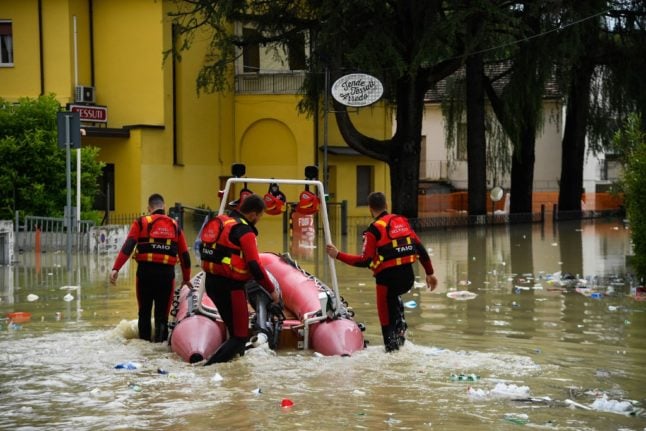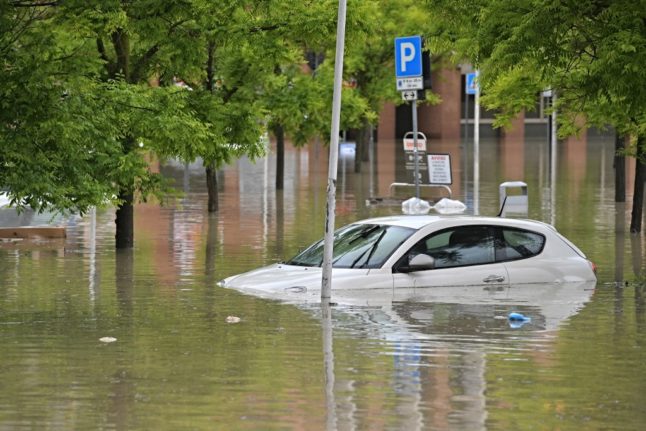Italy’s northeastern Emilia Romagna region was hit by disastrous flooding on Wednesday and Thursday for the second time in just two weeks following torrential rainfall.
A least 13 people were killed and more than 10,000 evacuated from their homes after rivers across the region burst their banks.
Italy is no stranger to severe floods, but why has the recent flooding in Emilia Romagna been so devastating?
READ ALSO: ‘Shocking disaster’: Death toll rises to 13 after floods in northern Italy
Firstly, the region was hit by downpours of unprecedented intensity, with up to 50 centimetres of rain, equal to six months’ worth of rainfall, falling in some areas in 36 hours.
According to Francesco Violo, president of Italy’s National Council of Geologists, the recent wave of torrential rain was only the latest in an ever more frequent number of “extreme [weather] events that have a major impact on urban territory”, even in areas of the country where “maintenance is carried out”.

But, though devastating in and of themselves, the consequences of the bomba d’acqua (‘water bomb’ or intense downpour) that pounded the region between Tuesday and Wednesday were further aggravated by other factors.
READ ALSO: How you can help people affected by flooding in northern Italy
Firstly, the drought that northern Italy, including vast areas of Emilia Romagna, has endured over the last year has greatly reduced the ground’s ability to absorb rain.
That’s because, in the words of Mauro Rossi, a researcher from the National Research Council (CNR), prolonged drought “dries the soil and modifies its permeability in various ways”, which, coupled with “extreme rain events”, makes “geo-hydrological events more likely in our territory.”
But not only was local soil’s ability to ‘soak up’ rainfall diminished by months of dry weather, the same soil had already been tested in early May by a first round of heavy rains, meaning that some areas were already saturated with water when the latest wave of bad weather came around on Tuesday.
READ ALSO: Floods in Italy: What to do when there’s a weather warning

Finally, the absence of water-absorbing vegetation at the sides of many local rivers, including the Lamone – one of Emilia Romagna’s main water courses – contributed to flood waters spreading so rapidly across the region’s flat lands.
According to Andrea Agapito, head of the Network and Oasis department at WWF, these natural defences and their vital “sponge effect” have been removed over the years to make room for “houses and crop fields”.




 Please whitelist us to continue reading.
Please whitelist us to continue reading.
Member comments